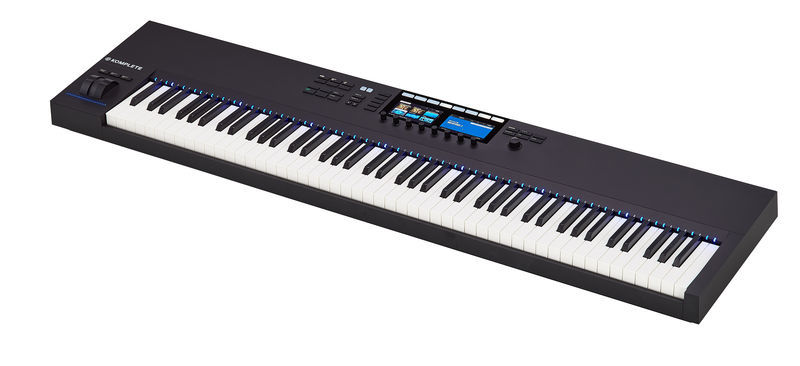
Some excellent software is included with this KeyLab 88 MkII, such as Ableton Live lite, Analog Lab V, Piano V, Wurli V, and Vox Continental V (the latter two offer more classic and retro sounds). Expression and Sustain pedal inputs, 9-12V DC power input, USB connection, and CV In. Aux 1/2/3 pedal inputs are also found (you can use the Aux inputs with a continuously variable pedal/footswitch to control any assignable MIDI CC number). In addition, MIDI In/Out (the MIDI input also serves as a MIDI/USB converter for your DAW). The two-line display shows you parameters and preset information adjusted and selected.īehind the keyboard, you will find Pitch/Gate/Mod1/Mod2 outputs (to send control voltages and triggers to a modular synthesis system). Navigate through menus along with the category, preset, left, and right buttons, and the encoder in the center. Having buttons to switch between Analog Lab, DAW, or User Mode, this section is also used to select presets in Analog Lab (vintage keyboard collection software included). Therefore, the Mk II gives you direct access to the most frequently used commands in your DAW. The DAW Commands/User section control various track controls in your DAW like Solo, Mute, Record, Read, Write, and global controls consisting of Save, In, Out, Metronome, and Undo. Transport controls consist of Rewind, Fast-forward, Stop, Play/Pause, Record, and Loop and is always available as global controls in all three modes (Analog Lab, DAW, and User). Transport And DAW Commands / User Section.While in User Mode, both encoders and faders send several types of MIDI data. In DAW mode, encoders alter the panning in the mixer, while the faders alter the volume. At the same time, the faders control envelope parameters like attack, decay, sustain, and release.

For example, in Analog Lab, the encoders will affect a range of parameters like cutoff, resonance, LFO amount, etc.

Within each mode, each pad can have a different setting.Įncoders are endless (they can turn continuously without a start or finish point) and have multiple functionalities. The pads are also pressure-sensitive, meaning that they have polyphonic aftertouch. Velocity-sensitive pads have different uses, such as being able to trigger samples within your DAW, you can play chords on software or hardware instruments, and can send MIDI data.


 0 kommentar(er)
0 kommentar(er)
